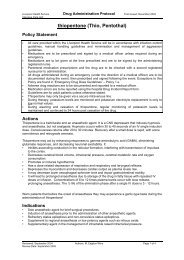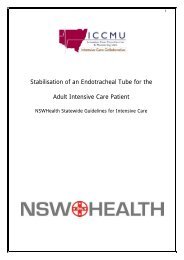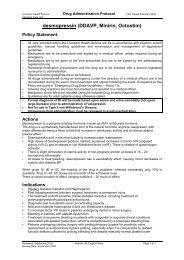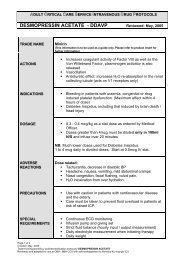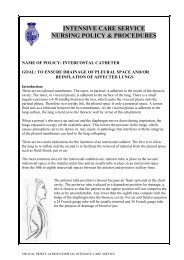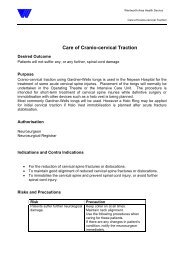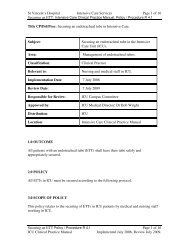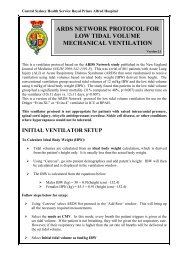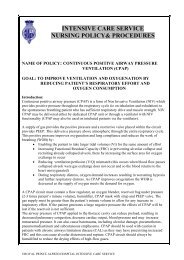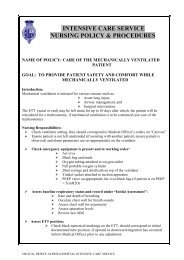A quick reference guide to haemofiltration and renal failure March ...
A quick reference guide to haemofiltration and renal failure March ...
A quick reference guide to haemofiltration and renal failure March ...
Create successful ePaper yourself
Turn your PDF publications into a flip-book with our unique Google optimized e-Paper software.
The ability <strong>to</strong> modify replacement fluid (for CVVH) <strong>and</strong> dialysate<br />
(for CVVHD) in order <strong>to</strong> change plasma composition is one of the<br />
major advantages of CRRT. For instance, the concentration of<br />
ions such as potassium can be manipulated <strong>and</strong> the concentration<br />
of bicarbonate can be varied <strong>to</strong> correct a metabolic acidosis (Mehta<br />
2002:344).<br />
The composition of the replacement fluid or dialysate is most<br />
commonly a st<strong>and</strong>ard solution with predetermined concentrations<br />
of base (usually lactate) <strong>and</strong> ions, however, there may be<br />
occasions where cus<strong>to</strong>mising the solutions proves beneficial.<br />
(Mehta 2002:344).<br />
Since high serum potassium is common in acute <strong>renal</strong> <strong>failure</strong>, such<br />
commercially prepared solutions are low in this ion, <strong>and</strong> so it may<br />
be necessary <strong>to</strong> add this <strong>to</strong> the replacement fluid.<br />
Lactate is used as a buffer in prepared solutions, <strong>and</strong> is stable in<br />
this environment. Solutions containing lactate are suitable for use<br />
in most patients, but in the critically ill patient who may have<br />
difficulty clearing lactate, as with liver <strong>failure</strong>, a bicarbonate<br />
solution may be necessary.<br />
30




